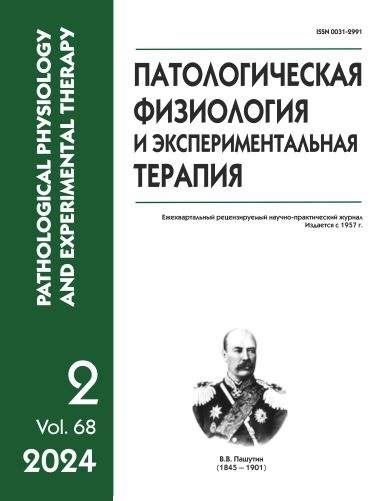Anticoagulant effects of root extracts from the breeding peony (Bartzella)
Abstract
Introduction. Studying substances with anticoagulant properties is relevant for physiology and medicine due to the widespread occurrence of thrombotic conditions in humans and animals. Plants with such effects are known for the presence of anti-thrombotic polysaccharide heparin-like components in their molecular structure.
The aim of the study was to identify the anticoagulant and antipolymerization effects on fibrin of the extract obtained from the roots of the breeding peony Bartella and to describe possible mechanisms of its action on experimental ex vivo thrombosis in rats.
Methods. The effect of a breeding peony extract on the anticoagulant activity of rat blood plasma was studied using three tests, including activated partial thromboplastin time (APTT), prothrombin time (PT), and thrombin time (TT), on the degree of fibrin polymerization (DFP) and on the fibrin dissolution in ex vivo thrombosis. Wistar male rats were used for the experiments. The fibrinolytic activity of rat blood plasma was evaluated by tests of total fibrinolytic activity (TFA), non-enzymatic fibrinolysis (NEF), and enzymatic fibrinolysis (EF) on non-stabilized fibrin plates. Fibrin polymerization was detected with the test of fibrin-depolymerization activity (FDPA) of blood plasma on factor XIIIa-unstabilized fibrin.
Results. The study demonstrated the anticoagulant (by prolongation of APTT, TT, and PT) and fibrinolytic (by increases in TFA and NEF) properties of the plasma from healthy rats after the addition of the peony extract to plasma in a ratio of 0,25:1. In the ex vivo model of thrombosis in rats injected with tissue thromboplastin (first thrombosis model, TM), the addition of the peony root extract to such plasma increased TFA and NEF by 26% and 45%, respectively. The mechanism of the activating effect of the extract on plasma fibrinolysis was found to be due to the inhibition of thrombin and of the fibrin polymerization. In the second ex vivo TM (2 NIH units of thrombin in a volume of 0,05 ml were added to 0,2 ml of rat blood plasma; a fibrin clot formed within 2-3 minutes), it was shown that a 0,5% extract in a volume of 0,1 ml added to a pre-formed clot 15 minutes after modeling thrombosis, was capable of dissolving fibrin.
Conclusion. The breeding peony root extract had anticoagulant and fibrin-depolymerization effects. When acting on pre-formed non-stabilized fibrin the extract caused the dissolution of freshly formed fibrin clots. A possible mechanism of the effect of the breeding peony extract on the fibrin dissolution in a blood clot due to thrombin inhibition is discussed.






